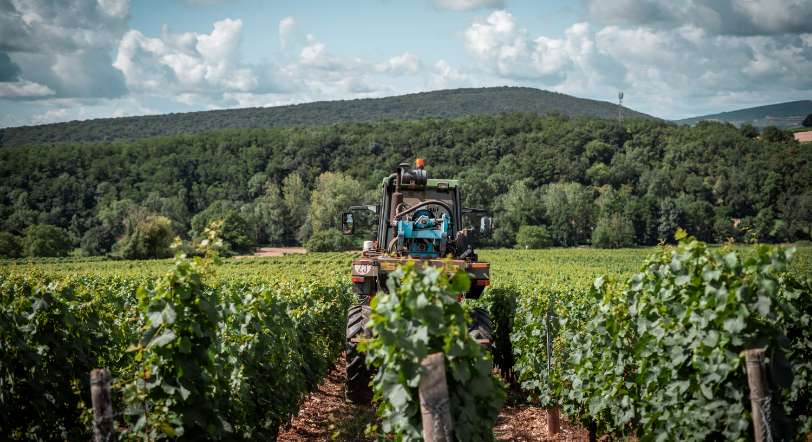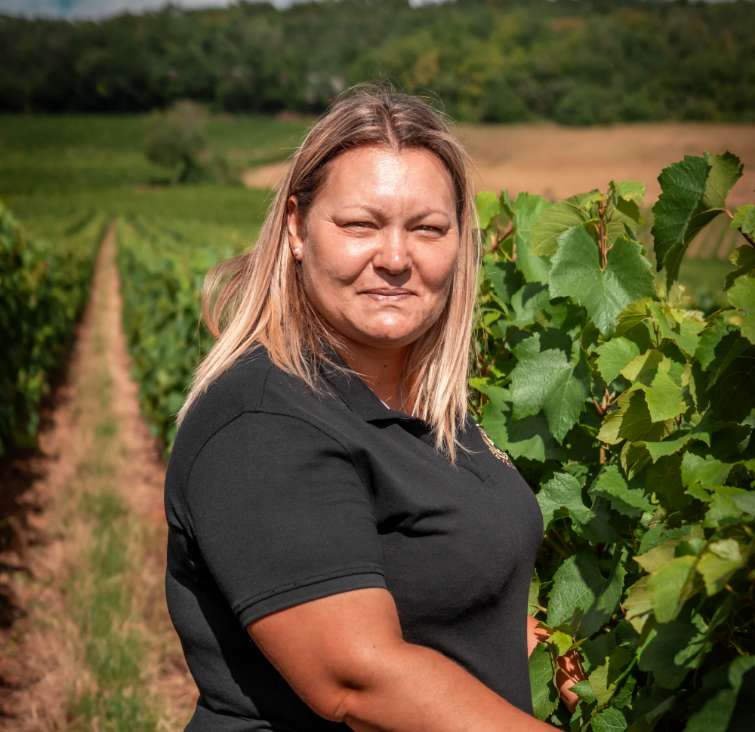The Maconnais vineyard
The Maconnais vineyard expands over a vaste triangle outlined by the cities or Macon, Tournus, and Cluny, bordered by the Saone Valley to the east and the Grosne Valley to the west.
Its’ hills stretch from the north of Tournus to the south of Macon for an area over 50km long
that hardly exceeds 500m of altitude.


The vineyard
The vines of La Cave D’Azé have been planted on these hillsides since the romans. Perpetuated by the monks of Cluny, the 248 hectares winery is exploited by fifty or so workers.
THE FOLLOWING VARIETIES ARE CULTIVATED :
Chardonnay,Mâcon Azé, Mâcon Village et Bourgogne blanc, Vendanges Saint Martin
Aligoté, Bourgogne Aligoté
Gamay, Mâcon Azé Rouge, Bourgogne Passetoutgrains
Pinot noir, Bourgogne Rouge
A winegrower's
work throughout
the year
THE WINTER
In November, during the first frosts, it’s time to trim the vines. This time consuming task (trimming continues until spring) is done by hand and varies depending on the variety of grape as they are regulated by each grape variety standard. La taille est régit par le cahier des charges de l’appellation.
Winter is also the time where we renew and repair the trellises (replacing wires and posts) before attaching the the vines at the end. À la fin de l’hiver, on attache les baguettes (le pliage).
THE SUMMER
Towards mid august, the grapes begin to ripen, filling with sugar and color.
THE SPRING
When spring arrives and the first buds grow, a selection is done : “l’ébourgeonnage” or disbudding.
Beginning of june is budding season, with rapid growth the new branches are fragile and need to be protected. They are picked up and attached to the trellis to protect them from winds and storms. At this time we also keep an eye on the vine’s health, watching out for mildew and oidium : a vine’s biggest enemies.
THE AUTUMN
With September having arrived, it’s almost time to harvest. Samples are taken to see how ripe the grapes are, and once all conditions are met (acidity, degree) the harvest begins.
Parcels go through a rigorous selections process before filling the vats.